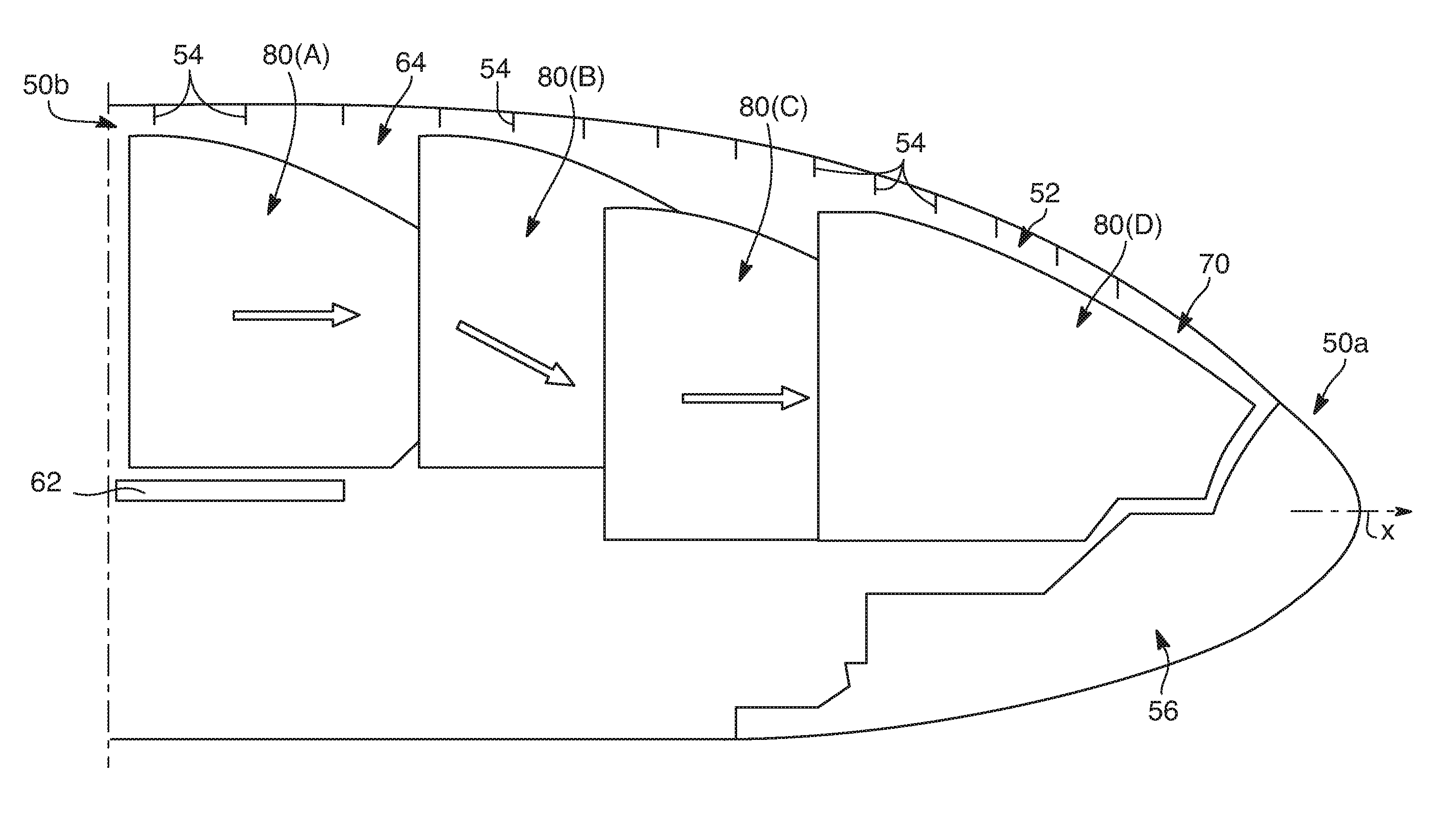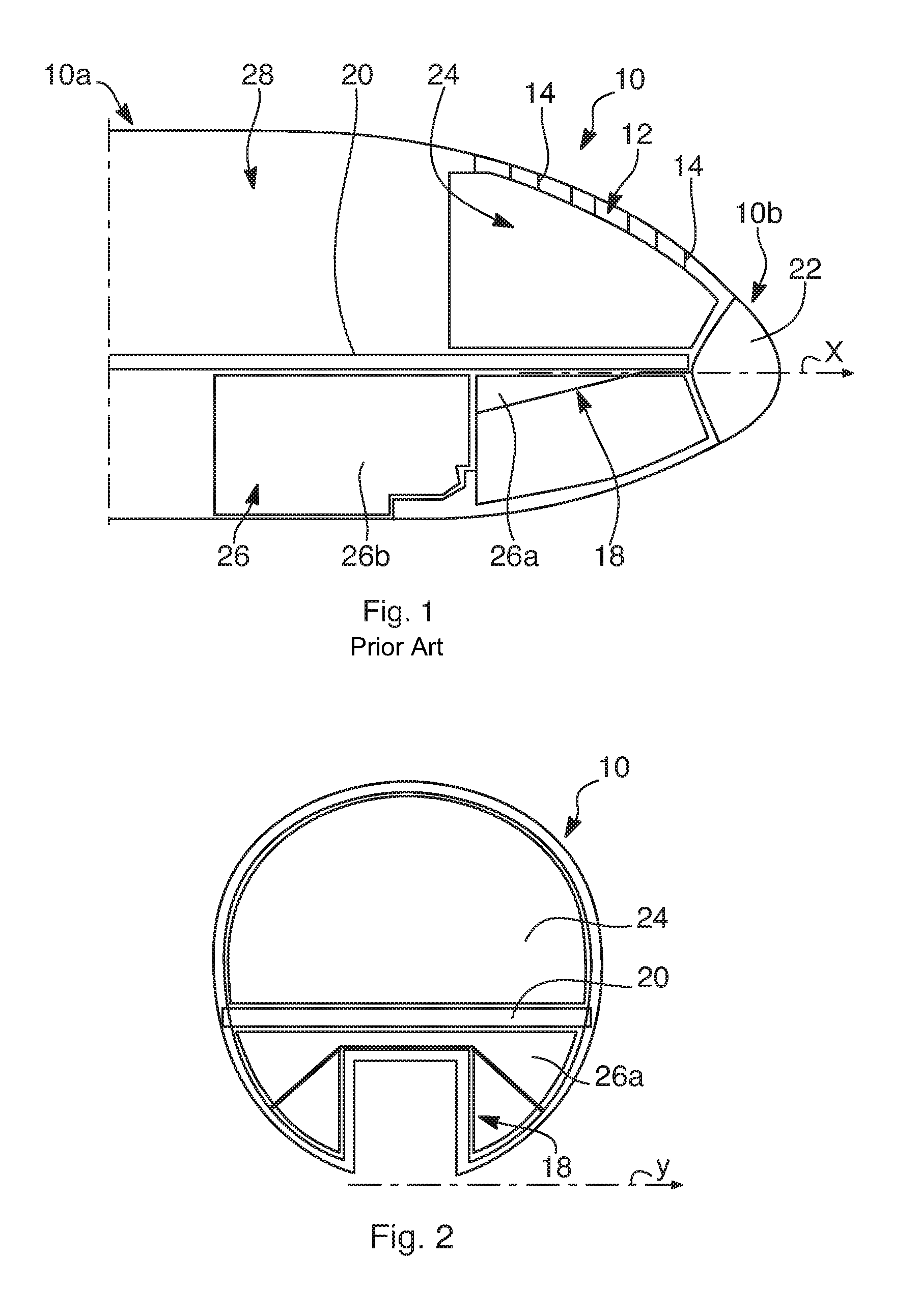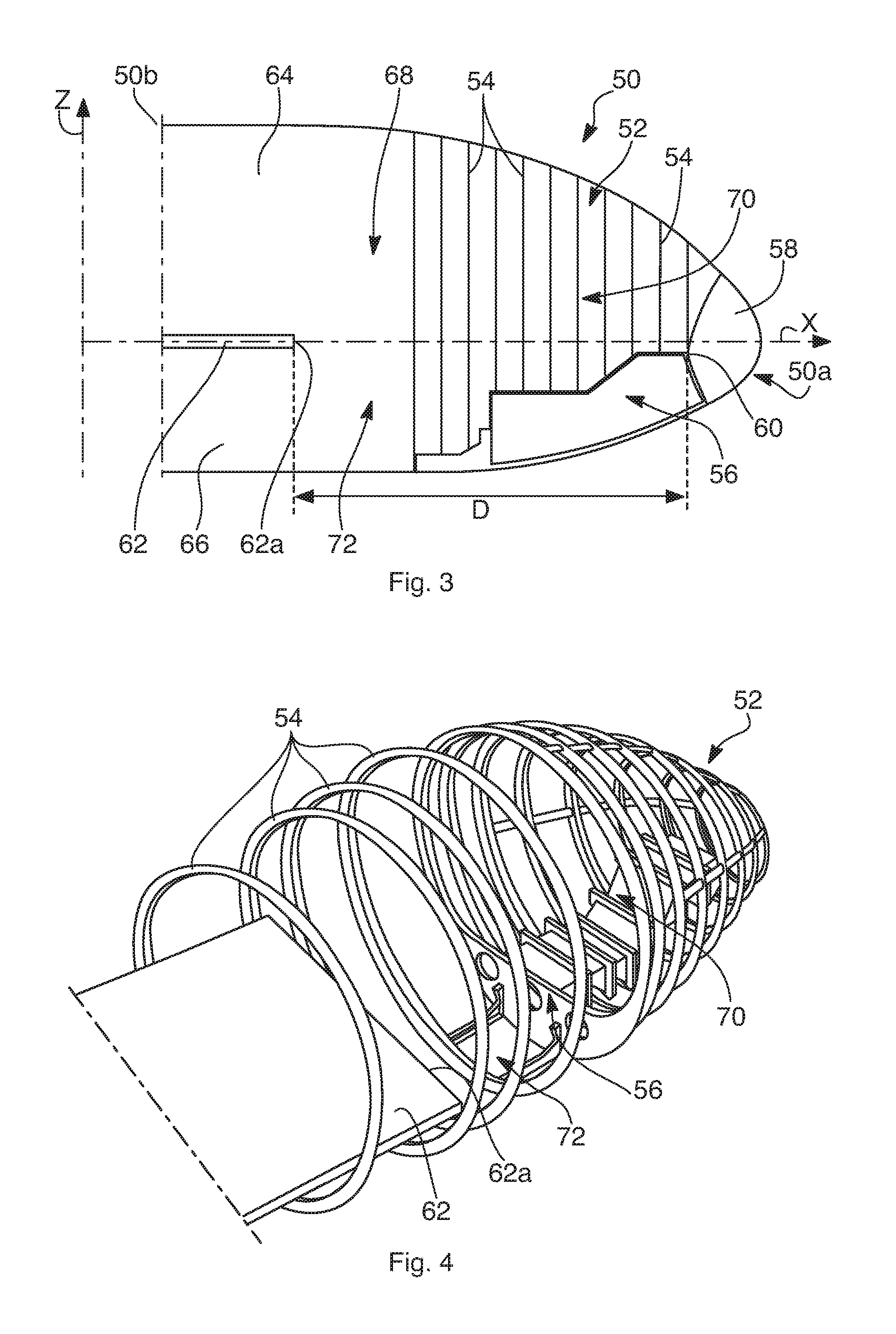Aircraft nose with cockpit and avionics bay modules integrated therein
a technology of avionics bay modules and cockpits, applied in the field of aircraft noses, can solve the problems of affecting the performance of the rear zone, and consuming a large amount of resources, so as to achieve the effect of relatively simple and quick
- Summary
- Abstract
- Description
- Claims
- Application Information
AI Technical Summary
Benefits of technology
Problems solved by technology
Method used
Image
Examples
Embodiment Construction
[0070]As shown diagrammatically in FIG. 3 and given overall reference 50, an aircraft nose comprises a primary fuselage structure 52.
[0071]The primary fuselage structure 52 comprises in particular:[0072]a plurality of mutually parallel fuselage frames 54 that are arranged longitudinally along the nose along the longitudinal axis X of the nose (the frames are shown in part using dashed lines, for reasons of clarity); and[0073]a bay 56 for storing nose landing gear (not shown) of the aircraft.
[0074]The nose 50 includes firstly a front end 50a housing a radome zone 58 defined by a radome partition 60, and secondly an open rear end 50b.
[0075]The nose 50 also has a cabin floor 62 that extends from the open rear end 50b longitudinally towards the front end. The cabin floor 62 is interrupted at a distance D from the partition 60 and it terminates in a free end 62a whereas, in the prior art (FIG. 1), the cabin floor extends as far as the radome partition.
[0076]In the height direction, the ...
PUM
| Property | Measurement | Unit |
|---|---|---|
| shape | aaaaa | aaaaa |
| height | aaaaa | aaaaa |
| time | aaaaa | aaaaa |
Abstract
Description
Claims
Application Information
 Login to View More
Login to View More - R&D
- Intellectual Property
- Life Sciences
- Materials
- Tech Scout
- Unparalleled Data Quality
- Higher Quality Content
- 60% Fewer Hallucinations
Browse by: Latest US Patents, China's latest patents, Technical Efficacy Thesaurus, Application Domain, Technology Topic, Popular Technical Reports.
© 2025 PatSnap. All rights reserved.Legal|Privacy policy|Modern Slavery Act Transparency Statement|Sitemap|About US| Contact US: help@patsnap.com



